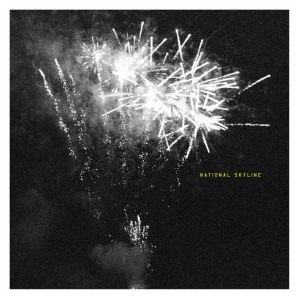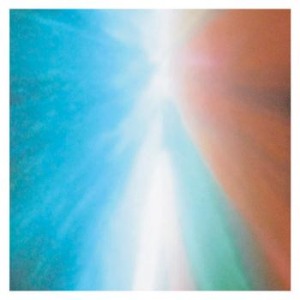
I’ve never been comfortable with the term “selling out.” During the ’90s when using it was particularly in vogue, cynics would scoff at bands for jumping ship from trusted independent labels to majors, for becoming more melodic and approachable, for countless other things (tour buses over rusted-out vans, hotel rooms over living room floors, opening for bigger alt-rock bands instead of headlining small club tours) that came with the territory. These changes from the DIY lifestyle mostly benefited the bands themselves, but who was I to judge the exhaustion of playing a poorly promoted show in Omaha to twelve paying customers, sleeping on a porch in the middle of winter, and spending all of the proceeds from the show on gas to reach Dallas. All I could do was focus on the recorded results. For every ill-fated major label debut (Girls Against Boys’ Freak*on*ica), there was a wonderful album like Jawbox’s For Your Own Special Sweetheart, Hum’s You’d Prefer an Astronaut, or Shudder to Think’s Pony Express Record that wouldn’t have been as great without the resources of a major label. I couldn’t view merely being a part of that system as an indictment of a band’s worth. It came down to the end product and whether bands could succeed in either system.
In the last decade, “selling out” has evolved. The major/independent divide has faded into the background as the former struggle to maintain importance and the latter gain access to more of those resources. Now the most frequent point of contention is licensing music for commercials. Of Montreal caught heat for changing the lyrics of “Wraith Pinned to the Mist (And Other Games)” to better fit an Outback Steakhouse commercial. But for the most part, the cries against these acts are muted in comparison to the rage directed at bands daring to jump ship from Dischord or Touch and Go. Given the downturn in the recording industry, it’s easier to understand bands taking advantage of any opportunities that come up. Is it also that the corporate shadow looming over these scenarios is less apparent than a group signing with a major? After all, they’re less involved in the production of the end product.
Enter Hype Music. A collaboration between Extreme Music, an agency that licenses music for films, television, and commercials, and MTV Networks, the past and present home of 120 Minutes, Hype Music hand-selects bands, grooms them for synch-ability, and clears up any potential licensing headaches before music supervisors get nasty e-mails from their legal departments. Their artists benefit from exponentially increased exposure in the backgrounds of MTV reality programming, network dramas, and feature films. Win-win, right?
Not quite. If major labels were criticized for pushing bands to fit a specific context—three-minute slots on modern rock radio, call-out hooks for DJs, compressed audio to fit alongside polished peers—making music for licensing narrows those contexts considerably. Consider the grandfather of reality programming, MTV’s The Real World. On any given season you’ll encounter roommates aching for home, drinking with their cast mates, fighting with their cast mates, flirting with their cast mates, making the tearful decision to break up with the significant other back home, making the tearful decision to get back together with the significant other back home, etc. It’s a familiar template. Instead of having to hunt down songs that fit each of those contexts, why not have them ready? Why not have bands churn out these songs? From a logical perspective, it makes complete sense.

I wouldn’t care whose songs appear on the background of Jersey Shore or Teen Mom or how they got there if not for one personal wrinkle. National Skyline, the long-running project of Jeff Garber of Castor / Days in December / Big Bright Lights / Year of the Rabbit, is now one of Hype Music’s chosen acts. In 2011, National Skyline has released two EPs (Broadcasting, Vol. 1 and 2) and two LPs (Bursts and Broadcasting) of music tailor-made to these contexts. For the most part, these releases come with surprisingly little fanfare, appearing on iTunes and Amazon with almost no promotional push beyond the placement of songs on the aforementioned programs. The EPs were issued on Adventure Broadcasting, ostensibly the label of former Lassie Foundation member Jason-71, but as digital-only releases, they’re essentially self-released. The two LPs have the Hype Music stamp of approval. In my review of Broadcasting, Vol. 1, I theorized that the songs were custom-fitted for the rhythms of reality television, given National Skyline’s prior appearances in that realm, but the confirmation that Bursts and Broadcasting are rubber-stamped for that purpose gives me no comfort.
Before going any further, let me make one critical observation: If Jeff Garber chose an entirely new band name or pseudonym for these releases, I would have fewer qualms with their existence. (I would also likely not know of their existence.) But if something comes out with National Skyline on the cover, I am bound to be curious. This is a project that had mysterious, unreleased beginnings as a Champaign super-group of Jeff Dimpsey (Hum), Nick Macri (C-Clamp), Jeff Garber (Castor), and Derek Niedringhaus (Castor). When the first recordings appeared in 2000, the line-up had been pared down to Garber and Dimpsey and the sound had evolved into a combination of Antarctica’s icy electronic and Unforgettable Fire-era U2. Two EPs and an LP later, Garber moved to LA and the project went into deep freeze. After a fake-out ending with the maudlin The Last Day EP in 2007, Garber made a valiant return with 2009’s Bliss & Death, even bringing back Derek Niedringhaus for a few tracks. Suddenly my excitement for the project—and Garber’s output as a whole—had returned. After picking up two mixed-bag, closet-cleaning EPs, I waited patiently for the next LP.
But does either Bursts or Broadcasting count as that next LP? Are they in the same continuity as Bliss & Death? Or are they in the commercial branch of National Skyline? Am I grasping at straws to entertain the possibility of multiple branches of the same band? Is it ever that simple? Consider Sonic Youth’s split between the avant-garde tendencies of their SYR EPs and the more grounded noise-rock of their official LPs. NYC Ghosts & Flowers confirms crossover between those lines. It’s naïve to think that Garber’s sequestering the “real” follow-up to Bliss & Death in a hermetically sealed chamber away from the Broadcasting material.
No, Bursts and Broadcasting were released as National Skyline records, so they are National Skyline records. If you squint, you can hear echoes of Bliss & Death in the guitar tones, in the production values, in the vocal melodies. Less effort is needed to hear the sonic references to the ’80s output of The Cure or the contemporary fuzzed-out pop of Deerhunter and Phoenix (all references appropriated from Hype Music’s page, but obvious enough without it). But there’s no meat to these syrupy confections. Between the track lengths that rarely stretch past two-and-a half minutes, the trite, surface-level insights of the lyrics, and the lack of major variation, fatigue sets in instantaneously. Choose any song and you’ll find lyrics like “I’m going to throw my arms around you / I’m going to wrap my love around you / You can have my heart now / You can have almost anything / You can pull my heart out / You can do almost anything you want” (“Almost Anything,” Broadcasting). Such lyrics appeared on The Last Day EP and the Bliss & Death companion EPs, but not exclusively. These songs indulge Garber’s worst habits. If I cared to sit through these 25 tracks a few times, I’d cite which stock television scenes they’d best fit. But I don’t want to listen to these songs. They’re not for me, the longtime Castor and National Skyline fan. They’re for specific contexts in television programming and fans of those programming.
Unlike the jaded scenesters crying “Sell-out!” at major-label bands in the ’90s, I find no joy in pointing out the extent of Jeff Garber’s commercial embrace. I understand it too well. MTV’s licensing of Bliss & Death songs likely made more money than the digital album sales. Scraping together gigs as a guitar tech, session musician, and recording engineer isn’t a consistent living. His shot at a major-label meal ticket (Year of the Rabbit) ended abruptly, and their Ken Andrews-less follow-up band (The Joy Circuit) couldn’t get traction. Hype Music offers Garber exposure to a new audience and a steady paycheck. It’s a familiar carrot. I can’t blame Garber for chasing it.
I keep thinking of best-case scenarios for this situation. Jeff Garber finds a way to write substantial National Skyline songs within Hype Music’s confines, proving once again that he’s a talented musical chameleon. Garber saves his worthiest tracks up for Bliss & Death, Vol. 2, and his contract with Hype Music allows for its release. Jeff Dimpsey moves out to LA and provides the editorial oversight the project needs. Castor’s discography gets a vinyl reissue. But the facts don’t support those pipe dreams. Consider this one: Garber’s released 34 National Skyline songs in 2011. Castor officially released 22 songs in their lifespan. The 1999–2001 iteration of National Skyline issued 22 songs. He’s more productive in this era than any other and, on a financial level, more successful. This era of National Skyline is here to stay.
That makes one of us.
|

